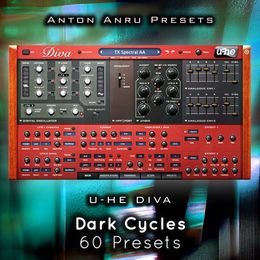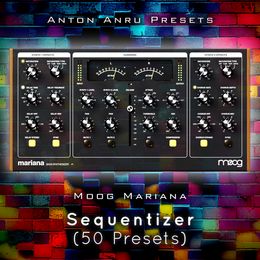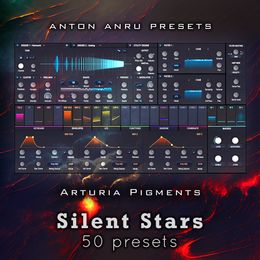🛒 Contact me if PayPal is unavailable to you. We'll find alternatives. 📌 Ensure you have the correct synthesizer for the soundset mentioned in the description. E.g. Minilogue & MinilogueXD are different instruments, their presets aren't interchangeable. Contact me if unsure about compatibility or whatever before purchasing. No refunds for mistaken purchases.
$9.95
Moog Mother-32 - Probability (20 Generative Patches by Anton Anru)
All Moog products:
➡️ Matriarch - 📚 COMPLETE BUNDLE 150 Patches (25% Discount)
➡️ Grandmother - All Soundsets
➡️ Grandmother - 📚 COMPLETE BUNDLE 145 Patches (25% Discount)
➡️ Sound Studio - 📚 BUNDLEs (25% Discount)
➡️ Spectravox - Modular Voices (50 Patches)
➡️ Labyrinth - Circuit Maze (50 Patches)
➡️ Subharmonicon - Undertones (50 Patches)
➡️ Subsequent 37/Sub 37 - All Soundsets
➡️ Subsequent 37/Sub 37 - 📚 BUNDLES (20-40% Discount)
➡️ Mavis - Modular Mood (50 Patches)
➡️ Minitaur/Sirin - Analog Tones (100 Presets)
➡️ Subsequent 25/Sub Phatty - All Soundsets
➡️ Subsequent 25/Sub Phatty - 📚 BUNDLE 128 Patches (20% Discount)
Welcome to the soundset for a semi-modular synth Moog Mother-32.
«Probability» is a collection of 20 generative patches. This genre of sound design is very popular inside modular culture, and Mother-32 suggests a good set of features to enter this club.
Controlled chaos and randomness, probability, non-repetitiveness, tempo break, pattern uniqueness, short and long sounds alternation, unexpected changes, silence and density, harmonic and fx-like tones, freaky splashes during a sequence - all these things are included in the soundset.
Generative timbre may be a good addition to (or a lead part of) ambient or techno tracks, jams and performances. You may also record fragments into your DAW or sampler, slice it to one-shots or make loops - you’ll get a unique material for further processing.
All patches require a sequence playback, and, obviously, the sequence itself influences on the final result greatly. Unfortunately, there’s no opportunity to export the patterns from Mother-32 to share them with you so that you could get exactly the same result as in my examples. However, I guess, there’s no strong need for it, as even a simple sequence can be transformed into a complex one thanks to the patching. You may pre-program patterns, or you probably already have some stored on your synth.
My general recommendation about the patterns is the following (and I used it in my examples): don’t activate too many steps, 2-3 inside an 8-steps group is enough, use maximum possible steps (32) for greater randomness, minimum steps - for a more predictable result, use wide range of notes, decorate your pattern with accents, glides, different gate lengths, ratchets, try different playback direction. In some cases, I give specific requirements to the pattern in Notes under the picture. And, of course, you may break these rules and try your own approach.
📚 The soundset is provided as a PDF document, with each page containing detailed notes that explain how each patch works, which parameters are worth tweaking during playback, and how to evolve the timbre during a performance. By following these notes and making adjustments consciously, you’ll not only get the most out of the patches but also gain a deeper understanding of the synth itself, uncovering its full potential and creative depth.
🎧 Each patch comes with an audio example to help you understand how the timbre is intended to sound, making it easier to integrate into your productions.
You need up to 10 patch cords to recreate the patches.
The patches do not include patterns/sequences.
➡️ Similar patches for Behringer Crave.
For any comments or questions contact me: anru.anton@gmail.com




